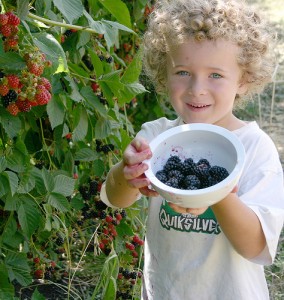 Does getting the job done closer to home align with collaborative best practice? That’s the question I’m asking myself after reading The 100 Mile Diet – A Year of Local Eating by Alisa Smith and J.B. Mackinnon. Published in 2007, this book became a bestseller, and inspiration for many around the world. These folks are local heroes. I live within their 100 mile adventure boundary.
Does getting the job done closer to home align with collaborative best practice? That’s the question I’m asking myself after reading The 100 Mile Diet – A Year of Local Eating by Alisa Smith and J.B. Mackinnon. Published in 2007, this book became a bestseller, and inspiration for many around the world. These folks are local heroes. I live within their 100 mile adventure boundary.
I think The 100 Mile Diet story offers up some interesting thoughts around collaboration, and the role that proximity plays in addressing our needs. Here are a few 100-mile concepts, along with a few of my own, associated thoughts:
- We have what we need right here. We may have to look a bit harder for it (as exemplified in my local Safeway food store!). In our work, do we really need to fly that consultant in to address our business needs?
- If we don’t have it, do we really need it? With food, I’m thinking of things like salt, cocoa, coffee. Those foods aren’t grown where I live. Could I do without? Could I substitute? Some of them? All of them? And what about that SaaS (Software as a Service) license I just renewed. The server is nowhere near me. Now maybe I could do without cocoa could I still effectively serve my clients using local server resources?
- Fresher tastes better. Living in the moment; being present. These are qualities compatible with people effectively engaged be it eating freshly picked blueberries or conversing with a co-worker.
- Fresher is healthier. Just as chemicals to maintain appearance are de rigour for far-flung produce distribution, so too are conversations authentic when they are heartfelt, natural, unmasked of ulterior motives.
- Reduce your cost. It would seem there is a ROI for buying local. Yet, then again, maybe the cost of going organic (if that’s the path) is higher?
- Systems approach. The 100 mile diet has a lot to do with how we interact with our environment; of our connections to external places and events far removed from us. Systems thinking; of being aware of the big picture, is a hallmark of good collaborators.
- Be connected to the people. If relationships are the currency of collaboration, how strong is my relationship to that Ethiopian farmer whose coffee I like to drink?
- Be connected to the place. Similarly; how connected am I to that banana plantation in Ecuador? Do I need to think beyond just buying Fair Trade?
- It’s the right thing to do. My intuition tells me that eating locally-grown food is the right thing to do. Trusting one’s intuition seems like a reasonable approach given the complex pros/cons for eating locally!
I’m still early in my own journey of buying locally-grown food. How about you? Have you lived the 100-mile diet? What has it taught you about being in proximity to others we depend on? Of collaboration?
If you enjoyed this post, please consider leaving a comment or subscribing to the feed to have future articles delivered to your feed reader.
Photo credit: sponselli

Hi Ben, thanks for the comment on Wikinomics. I really like your blog – great posts. I particularly enjoyed the food/collaboration metaphor in this one. I’ve added
Collaborative Journeys to my feed 🙂
Thanks Naumi. I really appreciate the positive feedback – especially as its’ coming from someone who blogs on Wikinomics. I’m a big fan of the Wikinomics site. I’ve found it a great resource; am always referring people to it; and have yet to find a better site on the topic of collaboration! Regards, Ben
Ben,
Check again. You said SALT isn’t grown where you live. Ben you live in Victoria-you can MAKE SALT from the ocean. Think about that powerful action Ghandi took when flouting the law he marched his followers into the ocean and MADE their OWN SALT!
Hi Katy,
Youre quite right. Thanks for catching my slip up! Id forgotten when I wrote the blog post (and your comment prompted to look at the book again to confirm my suspicion ) that the books epilogue actually contains a couple of pages where the authors, in what they describe as a mostly symbolic journey, collect some ocean water from the west coast of Vancouver Island. They do this in order to (you guessed it!) boil off the water and collect the salt crystals left behind. And, they too make reference to Gandhis famous 1930 salt march. Im glad you took the time to respond, and your critical eye on the content is most welcomed. Ben.
Hi Ben,
Thanks so much for your comments about the wonders of the Centrum experience.
I moved to Port Townsend because of Centrum and the unique quality of the offerings here. Like you, I continually find joy in every aspect of what these collaborative efforts of the Fort, Centrum and all of our partners have done to create these special and life changing opportunities. Thanks for all of the positive feedback. Hope to see you back again next year.
Thanks for sharing your story Leah. Yes, the stars seemed to of aligned at Centrum!